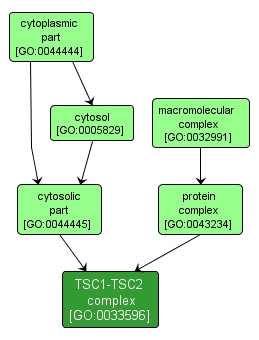GO TERM SUMMARY
|
| Name: |
TSC1-TSC2 complex |
| Acc: |
GO:0033596 |
| Aspect: |
Cellular Component |
| Desc: |
A heterodimeric protein complex consisting of tumerin and hamartin; its formation may regulate hamartin homomultimer formation. The complex acts as a GTPase activating protein (GAP) for the small GTPase (Rheb), and inhibits the TOR signaling pathway. |
Synonyms:
- tuberous sclerosis complex
- tuberin-hamartin complex
|
|

|
INTERACTIVE GO GRAPH
|














